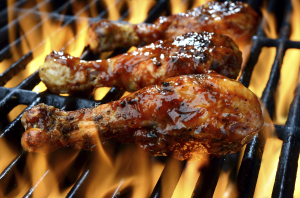
Pecan pie
According to The Dallas Morning News, Texas is in the top four states for pecan growing. This rich nut pie is officially the state pie so it’s no wonder it can be found on menus in diners and gourmet restaurants alike. It doesn’t matter what time of year, this delicious pie is available whether or not it’s Thanksgiving or Christmas.
Chicken-fried steak
Also called country-fried steak or pan-fried steak, this dish was supposedly created to tenderize meat that was very tough to eat by smashing it with a meat hammer before cooking and finishing it with gravy. According to foodtimeline.org, the first mention of this Texas staple was printed in an ad for Phelps, a restaurant at 111 East Bijou, in the Colorado Springs Gazette in June of 1914. The steak, usually beef but sometimes pork, is tenderized and then breaded with flour and spices. It is then baked or fried and covered in sauce or gravy.
Tortilla soup
While Europe was making soup with pasta and rice as the grain component, Mexico was making tortilla soup. With the close proximity of Texas to Mexico, where this hearty soup originated, it’s no wonder you can find a bowl of it on every block. The soup is usually made with chicken broth that has been flavored with roasted chilies. Toppings range from cheese, chicken, extra peppers, onion, avocado, tomatoes and more.
Barbecue
When most people think of Texas they think of a giant rack of ribs slathered in barbecue sauce being eaten by a cowboy. According to the Good Housekeeping Cook Book, published in 1955, barbecue is not just about the sauce, it’s about the method the meat was cooked. The process, from gathering the spices and utensils to getting the grill and cooking space ready is at the heart of barbecue. In Texas, grilling is a huge part of the culture. Steaks, veggies, fish, chicken and more are all grilled to smoky perfection at all manner of eateries across the state.
Fried okra
Also known as “lady finger,” this vegetable is usually eaten when it is immature and in pod form. It is low calorie and is a good source of fiber, vitamins and minerals. The plants grow well in the rich soils of Texas and are usually chopped into sliced rounds, lightly battered and then fried. They can be found as a standalone appetizer or as a topping for salad, chili and more.
Chili
Texas chili does not contain beans. It is a mixture of beef, chili paste and seasonings and is the perfect dip for cornbread, tortilla chips and more. It’s been a classic Texas food since before the Wild West, even Jesse James is supposed to have enjoyed the tasty soup. You can eat it plain, or as a sauce on tacos, hamburgers and even baked potatoes.

